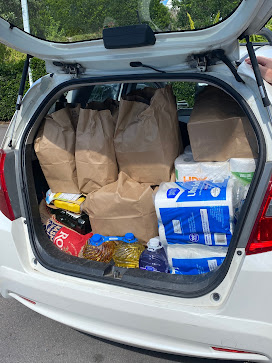The Hunt Begins...
It's been a very busy week starting up the summer's season. I am not very good at multi-tasking, but with an enormous amount of help from many Bermudians - from the loan of boats, crock pots, a house, and wheel barrows to multiple shopping runts and scouring island thrift stores for cutlery and plates - I've managed to get thirteen participants here, through immigration, and out to Paget Island, or base. Before we can put trowel to soil, we have to inventory the quite large and varied amount of gear needed to work, including clearing, surveying and excavating tools but also human basics like ensuring shade and water and bathrooms (we are still working on this last...). Then there is the need to shuttle all this over to Smallpox Bay, which has no docking facilities, along with the people to move and use it all. If it takes a village to raise a child, it takes an island to start a dig...
What are we searching for and how will we find it, I hear you ask. Our principal goals are to excavate a large area adjoining the standing stone Smallpox Bay ruin, a former quarantine site used by maritime Bermudians and the British military, to assess the hypothesis that this was where Governor Richard Moore established Bermuda's first town - 410 years ago - and also compare data from Bermuda's first large-scale ground penetrating radar survey done in April with the locations of actual features. GSSI archaeologist Peter Leach's preliminary findings suggest there should be a lot of post holes and possibly some larger features in the new locus (area) we will be investigating.
The GPR data looks very promising, showing an array of possible post holes (geophysical anomalies) and a few potential large features. Peter's initial GIS layers are guiding us where to position our first units in order to literally "ground truth" the readings. In our first few days we did not find features cut into bedrock to correspond closely with the readings, but I have since slightly tweaked and rescaled the survey area to match more closely with common landmarks; new units opened in the coming week will more closely align with Peter's anomalies.
 | ||
| GPR unidirectional transits with flagged anomalies, coded by depth. The green polygons represent larger potential features. The red line demarcates Locus A (north) from Locus B
|
 |
| Our lunch spot down by the water, where we can always count on a nice breeze |









.jpg)
Comments